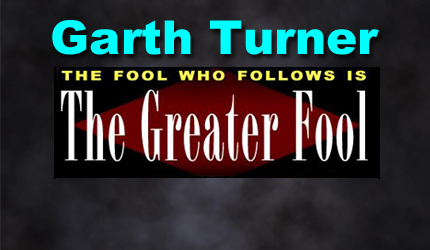July 27, 2021 | Get over it

Recently I collided with a woman who wanted me to build her a high-octane, growth-oriented, all-equity, no-safety-net portfolio. How come, I asked. “Because I’m young,” she said. “It’s what you’re supposed to do.”
Well, she didn’t make the cut as a client. And while the common wisdom in the money business is that investors with a long runway can shoulder a lot of risk while wrinklies should cower in fixed income, it’s wrong. Paleo thinking. Big mistake.
Since we all inhabit the same world, portfolios should be built for the times in which we live. Age is moot, as we’re all subject to identical risks and conditions. The pandemic is still hanging around. Interest rates have collapsed and have only one direction in which to head. Debt – public and private – is epic. Trump’s coming back. Markets are at record highs. China’s getting testy. Machine learning is about to transform the nature of work. At the same time there are yummy record corporate earnings, a big post-crisis expansion and growth-hungry CBs. It’s a complicated world.
So if somebody shares my two main goals: (a) don’t lose money and (b) get a decent rate of return, the portfolio makeup should be dictated by the world. Not the client’s birthdate. Meanwhile, rock-bottom rates mean no retiree (unless they have a few million) can afford to sit on risk-free, interest-bearing stuff and live off the yield. Moreover, people now live f-o-r-f-r-e-a-k-i-n-g-e-v-e-r so the biggest risk is outliving money. Not losing it. (How many times have I said that?)
In short, invest for the times. Not your emotions. This bring us to William.
“Warm greetings and sincere gratitude for the blog!” he says. “MSU: daily reader for about 7 years now. I love the blog, quote you obnoxiously to family and colleagues and resonate with many of your values.”
Bill is now 66, retires next week and, like most Boomers, he’s hate-worthy. Non-registered account of $1.3 million plus an equal amount in registered stuff and a paid-for condo that would sell for eight hundred. Here is what he’s done:
Five years ago I read about ‘sequence risk’, did some homework, and implemented a strategy of ‘declining/inclining equity glidepath’: I gradually reduced equity exposure (reduced, not eliminated) from 65% to 20% at present in order to protect the nest egg from sequence risk (i.e. no time to recover from bad bear market years) leading up to retirement. I intend to gradually ramp up the equity exposure of our portfolio over the first 5 years of retirement.
He asks what I think of this strategy. Over five years how much of a portfolio should be in growth assets who may be approaching seventy? Is this a sound way of managing risk? “I believe there are a TON of soon-to-be-retirees in Canada who have NOT thought seriously about sequence risk,” he says. “Apologies if this suggestion for a post sounds vaguely like a request for free financial advice…”
Of course it does. And that’s what this blog is all about – pumping out suggestions gratis so the Nobel Laureates and noted macroeconomists in the comments section can trash them. Oh well, here we go anyway.
Bill’s $2.6 million invested 80% in fixed income assets like bond funds will yield GIC-type returns. That 2% will give him about four grand a month which may be enough to live on. But it will also be equal to current inflation, and certainly fall behind it over time – especially since half will come from a taxable account. And since living in a big city in retirement ain’t nirvana on fifty grand a year, he may be tempted to nibble away at some of the principle. Okay, that’s a strategy. But life could be better.
What could he expect from a 60/40, with the fixed component being 26% bonds (govy, corps & provs), 13% preferreds and 1% cash? The ten-year average is 7.1% with 2020 yielding 7.5% and 2019 at 15.2%. Yes, an all-equity portfolio would deliver more, but with increased volatility and risk. Through the entire Covid mess, this mix has performed in a far more stable fashion than the equity markets. In other words, after professional fees (0.85% for a portfolio of that size, tax-deductible on the non-registered part) Bill’s bank account could be seeing monthly deposits of about $13,000. And in a far more tax-efficient form.
Oh yeah, and the principal is preserved. That’s because this guy has twenty years or more to live and nobody knows what lies ahead. Could be oxygen and a nursing home. Could be an Aventador SVJ Roadster.
The key is to strip emotion (usually fear) out of investment decisions. If you can’t do it, turn the job over to someone who can. Not an amateur. Look at the never-ending stream of comments to this blog about looming market crashes, pending recessions, certain collapses, deflation, hyperinflation, mass death and general mayhem/apocalypse. People have been posting them for the last 13 years. Never. Happened. As I keep saying, corrections – even big scary ones – are temporary. Recoveries and expansions are long. This one just started. Invest and fuhgeddaboudit.
So, Bill, get chilled by sequence risk if you want. But you’ll regret it.
STAY INFORMED! Receive our Weekly Recap of thought provoking articles, podcasts, and radio delivered to your inbox for FREE! Sign up here for the HoweStreet.com Weekly Recap.
Garth Turner July 27th, 2021
Posted In: The Greater Fool











